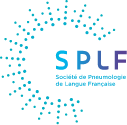High throughput screening to identify new compounds with proapoptotic activity in resistant lung cancer cells - 04/04/15
Resumen |
Introduction |
Lung cancers are the fourth most common diagnosed cancer in the world and the main cause of cancer death. A large majority of lung cancers are classified as poor prognosis non-small cell lung cancers (NSCLC) with 5-year survival rate less than 15%. Most NSCLC cells resist to apoptosis and targeted therapies.
To identify new molecules able to restore apoptosis in resistant NSCLC cells, a molecular high throughput screening was performed on NSCLC cells resistant to serum starvation. Seven thousand and five hundred molecules were screened at 2.5μmol/L, and 71 compounds restoring apoptosis after primary and validation screenings on NSCLC cells, were selected. Among these molecules, we identified a family of compounds with a strong structural homology, known to inhibit kinase activity. Our goal is to develop new therapeutic strategies able to overcome resistance of NSCLC cells.
Methods |
We selected 15 molecules of interest to identify the potential target(s) of these molecules by western blotting, RT-qPCR and immunofluorescence. We also assessed the effects of these compounds on NSCLC cells viability (MTS assay), apoptosis (Hoechst staining), and cell cycle (flow cytometry analysis).
Results |
The 15 compounds showed IC50 ranging from 0.1 to 50μmol/L. After 24h treatment, the molecules induced G2/M cell cycle arrest, except the molecule 11, which strongly induced subG1 accumulation. The 15 molecules significantly restored serum deprivation-induced apoptosis in H358 NSCLC cells at 96h. They also reduced cell viability in presence of serum, except the molecules 9 and 11. Most of the molecules decreased the expression level of EGFR and IGF1R and the phosphorylation level of Src, PKCδ, ERK and AKT. These 6 proteins are known as participating in apoptosis signalling pathways. Surprisingly, all compounds also reduced the level of tubulin and modified its network conformation.
Conclusions |
The family of compounds that we identified is able to restore apoptosis in resistant NSCLC cells and could be used as new therapeutic approaches in NSCLC. We will assess the effects of combination therapies on resistant NSCLC cells, and determine the target(s) of these molecules by kinome array. This project will identify the best drug-candidate to counteract the NSCLC cells resistance, alone or in combination with targeted therapies.
El texto completo de este artículo está disponible en PDF.Keyword : Cancer




